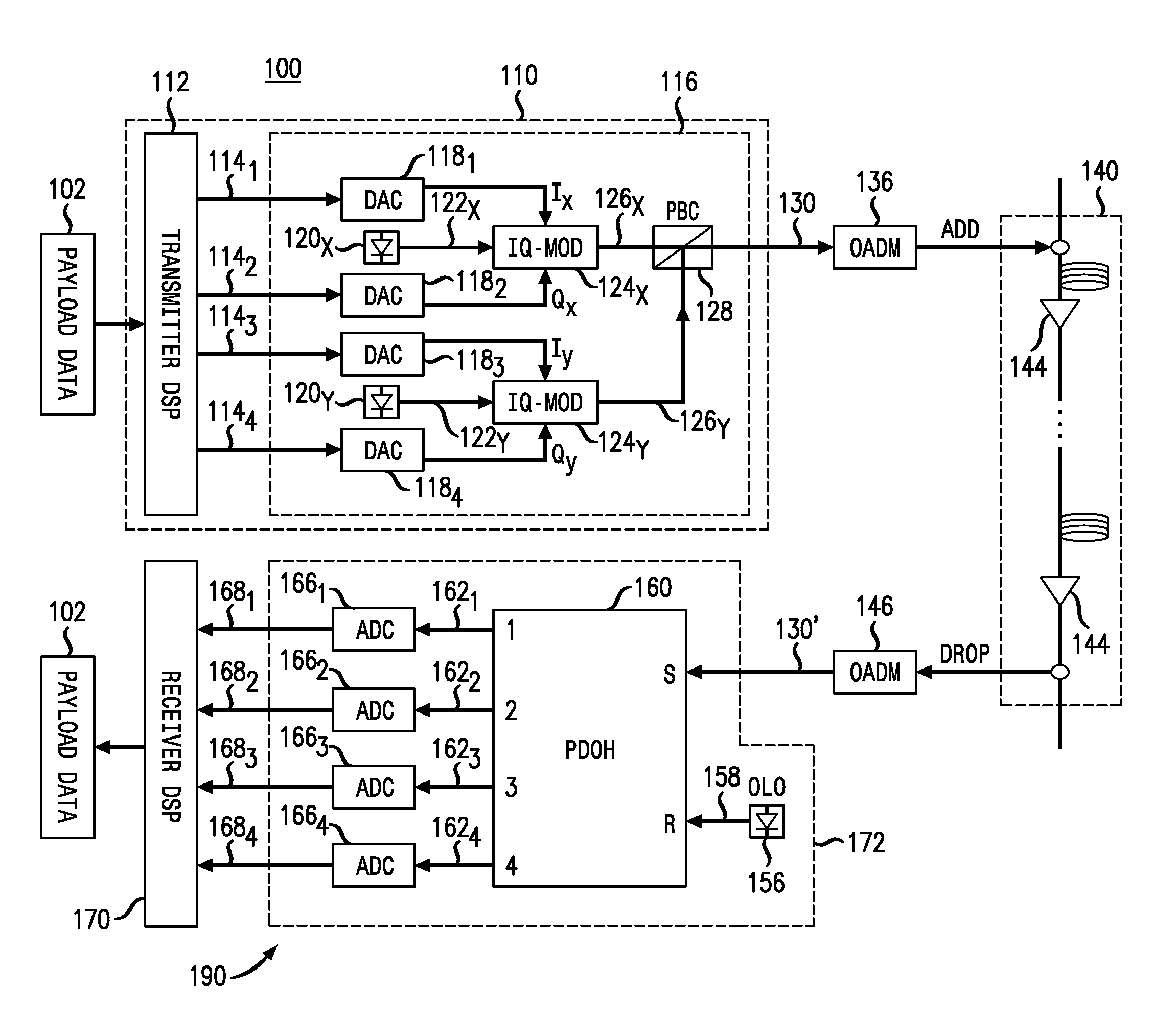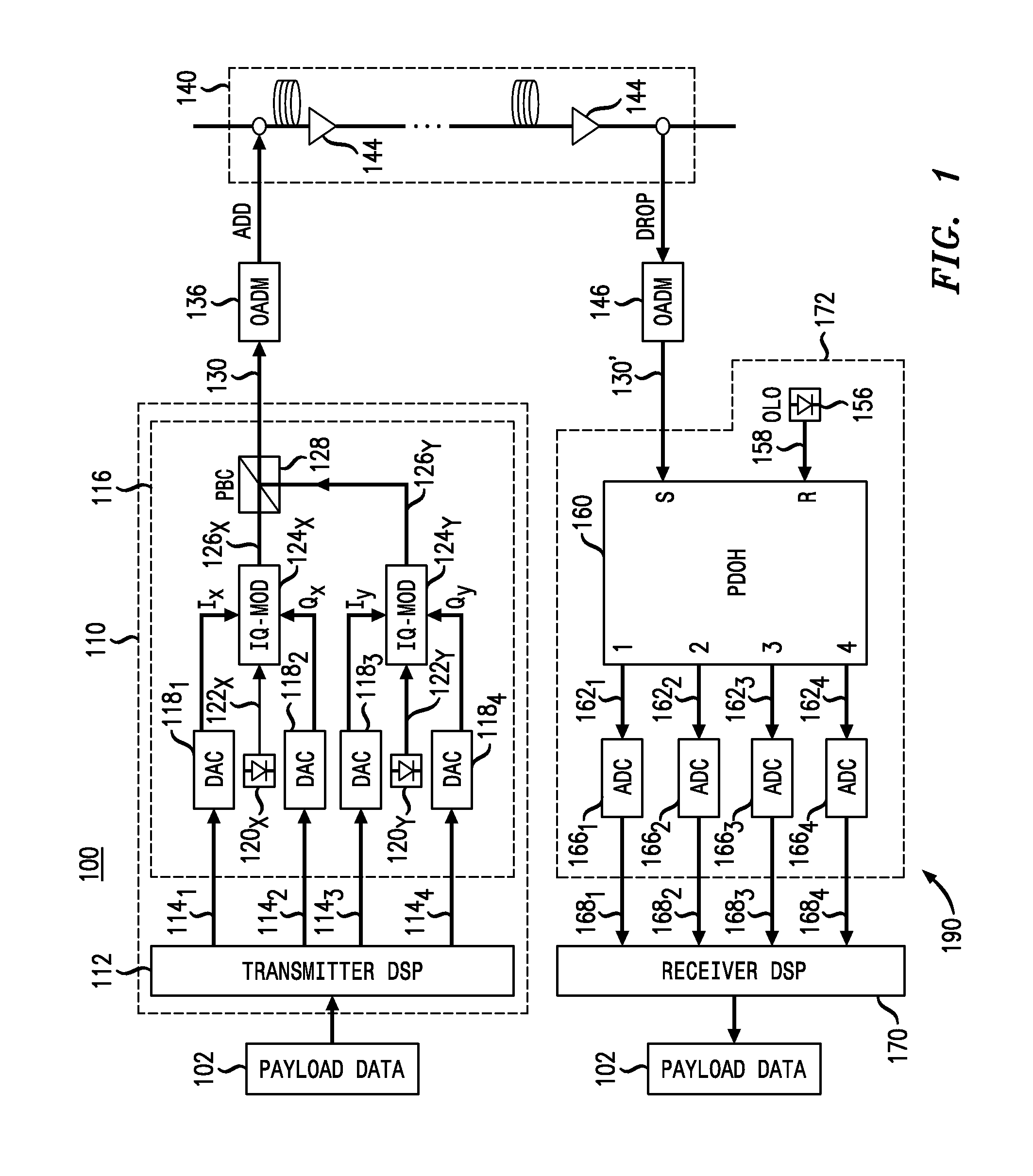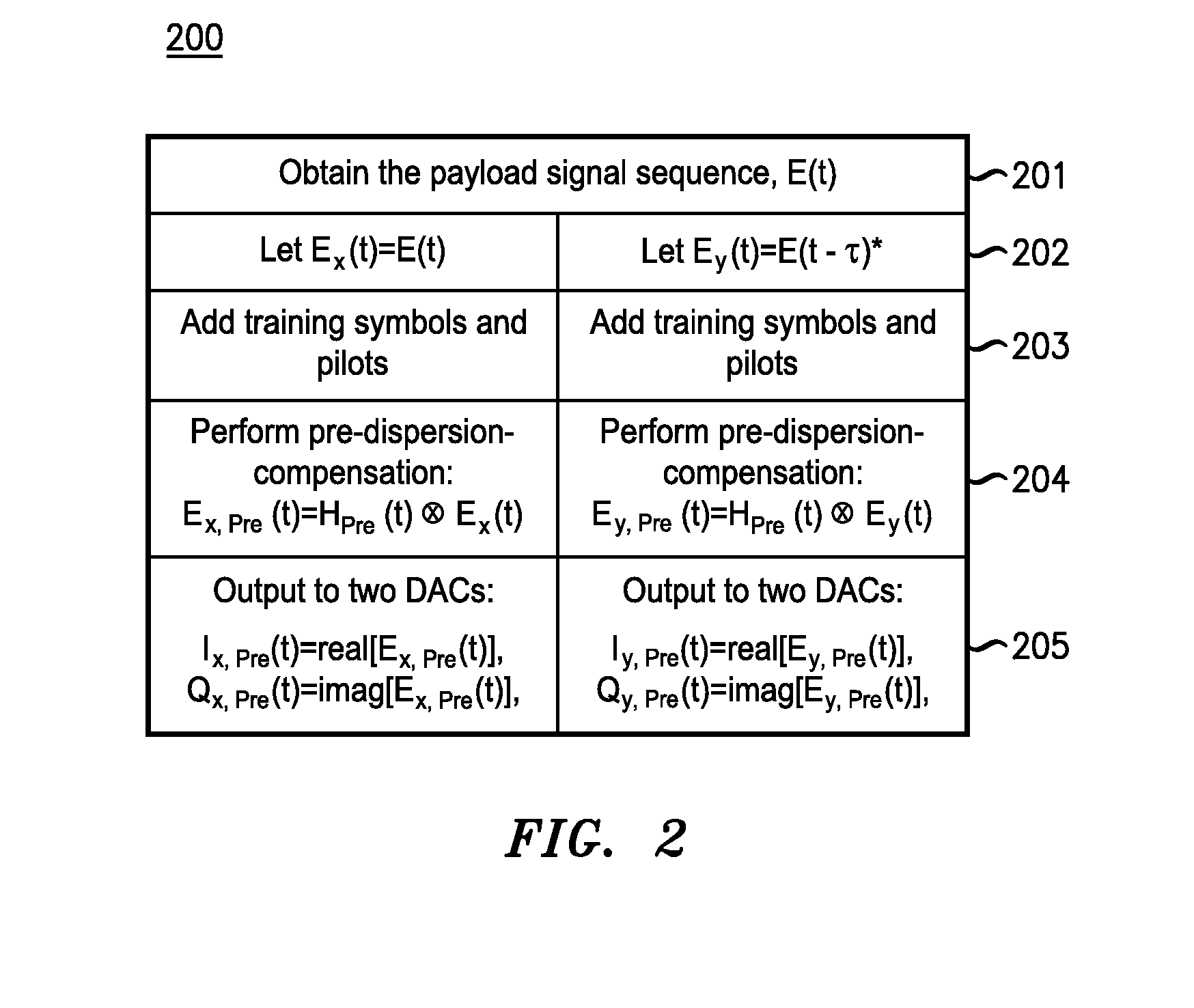Communication through pre-dispersion-compensated phase-conjugated optical variants
a phase-conjugated, optical variant technology, applied in multiplex communication, electrical equipment, electromagnetic transmission, etc., can solve the problem that the complexity of the dsp for capacity-approaching fec codes is forbiddingly high, and the coding-gain differences among various implementable fec codes usually do not exceed a certain maximum valu
- Summary
- Abstract
- Description
- Claims
- Application Information
AI Technical Summary
Benefits of technology
Problems solved by technology
Method used
Image
Examples
Embodiment Construction
[0045]Typical optical transmission links are able to support multiple degrees of freedom, such as time, space, carrier frequency (wavelength), and polarization. Each of these degrees of freedom can be used for optical-signal multiplexing. Multiplexing techniques corresponding to these four different individual degrees of freedom are referred to in the literature as time-division multiplexing, space-division multiplexing, wavelength-division multiplexing, and polarization-division multiplexing.
[0046]In addition to or instead of using the various degrees of freedom supported by an optical transmission link for multiplexed transmission of independent optical signals, various embodiments of the invention employ these degrees of freedom for the transmission of correlated optical signals, referred to as optical variants. In a representative embodiment, two optical variants are two optical signals that carry the same piece of payload data, bit-word, or bit sequence, but differ from each ot...
PUM
 Login to View More
Login to View More Abstract
Description
Claims
Application Information
 Login to View More
Login to View More - R&D
- Intellectual Property
- Life Sciences
- Materials
- Tech Scout
- Unparalleled Data Quality
- Higher Quality Content
- 60% Fewer Hallucinations
Browse by: Latest US Patents, China's latest patents, Technical Efficacy Thesaurus, Application Domain, Technology Topic, Popular Technical Reports.
© 2025 PatSnap. All rights reserved.Legal|Privacy policy|Modern Slavery Act Transparency Statement|Sitemap|About US| Contact US: help@patsnap.com



